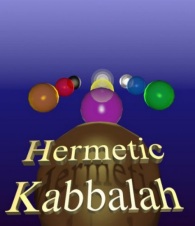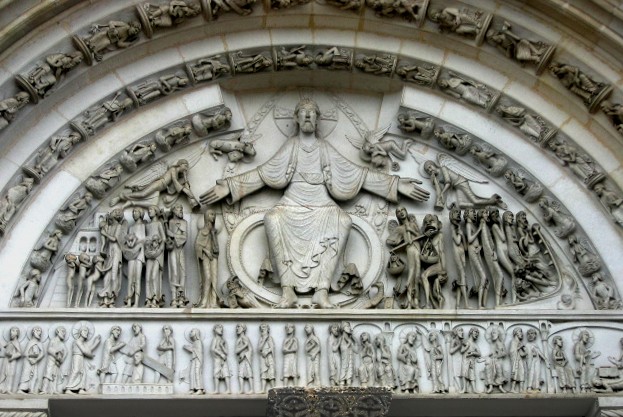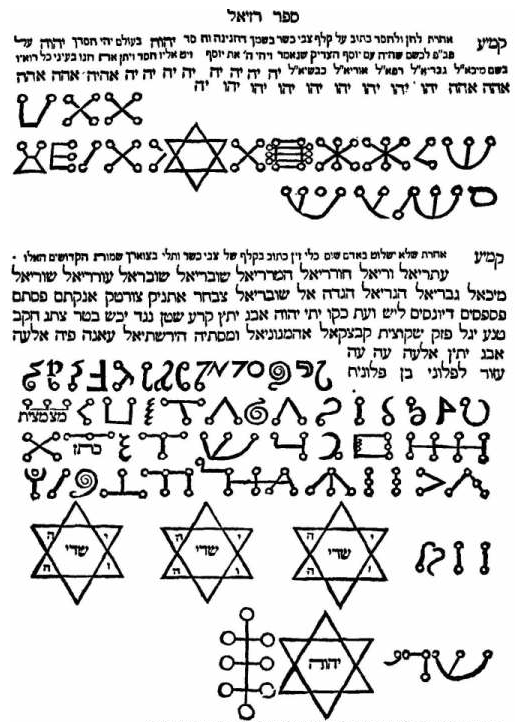 |
| |
Theurgy & Magic"There is a universal tendency among mankind to conceive all beings like themselves, and to transfer to every object those qualities with which they are familiarly acquainted, and of which they are intimately conscious." - David Hume Magic, the belief that one can influence one's environment using esoteric technical skills, is grounded in cultural assumptions about the nature and structure of reality. One of the simplest and most pervasive of these assumptions is that everything - people, places, plants, animals, stones, buildings and manufactured objects - is alive and so has a soul. These living souls exist within a larger ecology of being that subsumes what we might think of as our normal daily life. These living souls can interact with us directly, and become perceptible in dreams, during visionary experiences, and sometimes spontaneously. There is a vast terminology for identifying and classifying this extended "ecology of being", but for the sake of brevity and simplicity I will follow common usage and refer to them as "spirits". The ancient Greek term, daimones, would do just as well. The basic cultural model for relating to spirits differs in very few respects from the way that people deal with each other. We know that some people are kind and helpful. Some are neutral but prickly. Other people are mean and spiteful and vindictive. Most cultures view spirits in the same way. A universal method for smoothing relationships with spirits is propriation via offerings, usually food and drink, or animal sacrifices. Problems with spirits happen because people are neglectful and fail to respect spirits, break taboos, or irritate people who control spirits. The normal signs that one has angered spirits are misfortune and ill-health.Various classes in society specialise in understanding the relationship between spirits and people, and exhibit the subsidiary skills of identifying, communicating-with, propriating and manipulating classes of spirit. There is no simple, unambiguous, universal term for the technical skill of working with spirits. Most of the terms one might use are laden with cultural assumptions. A default term is "magic", and the word is used here. There is no reason to believe that in the distant past Europe was different from animist cultures the world over. The most significant cultural shift in Europe and the Middle East - the mileau for Kabbalah - was the early dominance of city states followed by empires of increasing size. The economy of city states increased the number of social classes and castes, and the emergence of empires, in particular the Roman and Persian empires, increased the number of highly-privileged, educated and urbanised administrative classes, characterised by an intense hierarchical stratification. Empires created the infrastructure, community, mindset and military reach necessary for the emergence of official state religions. With a degree of approximation one can say that Christianity became the state religion at the heart of the Eastern Roman Empire, and Islam the state religion at the heart of the Persian Empire, with a large amount of friction along the boundaries. This massive shift from tribal cultures and animist beliefs to empires administered by privileged hierarchies ruled by an emperor, caused a similarly dramatic shift in cultural assumptions about the nature of the spirit world. Taking ancient Greece as an example, as far back as 500BC animist beliefs were giving way to the belief that the Kosmos was the outcome of a creative process involving a single supreme source of all being. This change can be detected with Pythagoras, and becomes pronounced and highly influential with Plato. The impact of doing this is that all spirits become subordinate to a larger scheme. Instead of simply subsisting in an organic natural ecology, they become organised, stratified, categorised and increasingly dominated by larger concerns and hierarchies.  The techne of magic evolved in parallel with cultural assumptions about the nature of reality, as did the categorisation of magic and its practitioners. One could distinguish between the literate and educated, and the illiterate and uneducated. There was state-sanctioned magic, and there were practices (even in pagan Roman times) that were illegal and treated as criminal acts. There were approved entities, and unapproved entities. So, for example, there was the "low magic" (goetia) of uneducated peasants, and the "high magic" (theourgia) of highly educated Neoplatonist philosophers. The state-sanctioned magic of priests was reclassified as not being magic, while various itinerant mages, healers, fortune tellers and sorcerors were harrassed by the authorities. One of the greatest changes from earlier times was the increasingly clear-cut distinction between morally good entities (saints and angels), morally ambiguous or dubious entities (the spirits of the planets, zodiac and decans, days of the week, hours of the day etc), and morally evil entities (fallen angels and associated legions of devils). The Christian Church selected for itself a broad class of rites, ceremonies and ancient practices, reinterpreted and reframed them according to its own doctrines, and effectively reclassified anyone else as trafficking with evil spirits. Any modern discussion of magic in Europe and the Near Middle East tends to be laden with this cultural baggage from Late Antiquity (i.e. the transitional period c. 200CE - 500CE). The magical lore from that period was preserved with its cultural assumptions - a prime source of being, hierarchy and stratification, the magical importance of textual formulae, glyphs and secret names of power - more or less intact. The dominance of Christian culture made any further cultural development difficult and it was preserved until the Scientific Reformation of the seventeenth century. The publication of Cornelius Agrippa's infamous Three Volumes of Occult Philosophy in 1531-33 was essentially its last gasp. With the increasing rise of atheism (in all respects a greater barrier to comprehension than Christianity) it became obsolete, and apart from various romantically-inspired occult revivals, it has remained so. The purpose of this preamble is to highlight that the culture within which magic appears in Kabbalah shares many of the assumptions of the culture of Late Antiquity but is subtly different. There are those who will say that magic has no part in the Kabbalah, that this is a misunderstanding created by occult dilettantes who have misunderstood and misused Kabbalah. This is incorrect. In fact the praxis is explained in outline by one of the most respected of the medieval Spanish Kabbalists, Joseph Gikatilla, in his Gates of Light: Now you have been informed that the
essence of faith and the basis for
understanding the unity of God is to understand the applications for
each name. For all His Names that are mentioned in the Torah are
included in the Tetragrammaton YHVH, which is similar to a tree trunk.
Each of the other names - those which I have compared to roots and
branches and other hidden treasures - has a unique function. This is a style of magic that will be unfamiliar to many people. There is nothing in it about magic circles, black candles, sacrifices, arcane texts and conjurations, evil spirits, pacts, chanting or sinister robes - the kind of imagery that one can distil from the more lurid of the eighteenth century grimoires and summarised in Waite's Book of Black Magic. There is no "Black" in Gikatilla's mind; because he is Jewish and not Christian, it simply does not concern him. His worldview does not contain the strange, quasi-dualism of Christianity in which the powers of evil have a near autonomous status and compete for the souls of humanity. The idea of "selling one's soul" in a Faustian pact would have seemed utterly ludicrous. Iamblichus of Ipameia
The most articulate spokesperson for theurgy was the Platonist Iamblichus of Ipameia. A descendent of the priest-kings of Emessa in Syria, he had a peerless understanding both of late Platonism and the cultic practices of the time. Although he live nearly a thousand years before Joseph Gikatilla, there are so many similarities in assumption and structure in the Platonic emanationism of Late Antiquity, and the emanationism of classical Kabbalah, that his observations are not only useful, they are profoundly insightful. Iamblichus believed that the soul, descended into Nature, was so blinded by its interactions with, and passions for, the external world that it required physical ritual involving carefully chosen items to awaken it to the higher orders of reality. The "carefully chosen items" were sunthemata, items that had the property of revealing and communicating some aspect of the divine, and could be physical objects (stones, plants, animals), perfumes, music, actions, songs or poetry. A ritual immersion in sunthemata had the effect, like a magnifying glass, of concentrating a divine aspect on the soul and awakening the corresponding aspect in the soul. Ritual was a natural adjunct to the worldview of Iamblichus: philosophy prepared the mind, and ritual awakened the interior eye of the soul to the natural orders of the Kosmos. In time the soul itself became sunthemata, a conscious channel for the divine influx capable of demiurgic action and co-creation. If one substitutes for the theurgic pagan rituals of Iamblichus the traditional religious rituals and personal obligations of Judaism, performed with appropriate Kabbalistic kavannah (mindfulness, intention) and an awareness of Kabbalistic theosophy, then one obtains a theurgic schema similar to what Iamblichus describes. The tradition of Hermetic Kabbalah fuses both viewpoints. In 1978 (and subsequent) the author received instruction in theurgic methods which contained the theurgic structure of Gikatilla (the structure of sefirotic invocation outlined in The Gates of Light) with practical theurgic ritual methods according to the outline given by Iamblichus. A key aspect of Kabbalistic theurgy is the use of names. As Gikatilla states, names have a unique function. They are not merely signifiers; they are capabilities. One must know how to concentrate upon them, and for this one must become aware of the context within which they are embedded. For example, the name Adonai is associated with the sefira Malkhut and with the Shekhinah, and a vast association of symbolism, legend, scripture, history and ritual practice is evoked within the mind of the Kabbalist when this name is employed. There would almost certainly have been additional secret techniques used under the guise of "concentration"; Gikatilla was for a time a student of Abraham Abulafia, a master of the discipline of tzeruf, a technique of sustained mental concentration in which names are permuted and combined. The use of names as capabilities, somewhat in the manner of a platinum credit card, did provoke a sense of unease. In the Sepher Chasidim, attributed to R. Judah the Pious, it states: "One may not say that the invocation of God's Name obliges Him to do the will of the invoker, that God Himself is coerced by the recital of His Name; but that the Name itself is invested with the power to fulfill the desire of the man who utters it." So yes, as the good Rabbi Judah confirms, it is a platinum credit card!It is accepted among scholars that the stimulus for the development of Kabbalah in medieval Europe was a re-reading of a much older stratum of documents from the near East (particularly Palestine and Babylonia) and their re-interpretation in the light of the culture of medieval Europe. This can be likened to the revival of Classical arts during the Italian Renaissance. In addition to standard texts such as the Tanakh (Jewish Bible), the Talmud, and a large selection of secondary materials (aggadot and midrashim), there were some very unusual texts that had been preserved in family lineages such as the Kalonymous family in the Rhineland, examples being The Sepher Yetzirah, the Shi'ur Komah, various Hekhalot and Merkavah texts, and a disorganised and inscrutable collection of texts published as Sepher Raziel haMelekh. These texts, highly influential in the development of Kabbalistic ideas, have a pronounced magical flavour. Probably the most important is the Sepher Yetzirah, subject to a large number of commentaries by prominent Kabbalists. In outline it is little more than a terse, enigmatic and almost poetic reframing of standard Neopythagorean ideas from Late Antiquity, transposed into a Jewish setting. In the medieval mind it was literally "The Book of Creation", a prescription for advanced mystical-magical practices culminating in the creation of life. Popular myth-making around this idea gave rise to the many stories about the golem, an artificial being made out of mud and animated by the power of Holy Names. The Shi'ur Komah , partly inspired by traditions surrounding the Song of Songs, is a theophany (a vision of the divine), and contains a description of the divine throne and an enumeration of the dimensions and secret names of an incomprehensibly vast humanoid figure. The traditions concerning it are lost - even in early medieval times it was inscrutable. It does recall certain ancient traditions and practices of the Mandean gnostics in southern Iraq who used the secret names of the body parts of the giant Primordial Adam (Adam Kadmon) to create an immortal Body of Light for a deceased person. There may be similarities with ancient Egyptian traditions concerning the dismembered body of the God Osiris. The Hekhalot and Merkavah literature (see for example The Greater Hekhalot) is a literature associated with a mystical vision of the divine throne. It contains detailed enumerations of angels and guards and overseers and secret seals and is very clearly related to an analagous and contemporary magical literature, and also to a large body of contemporary gnostic material. The Sepher Raziel haMelekh is overtly magical and contains a disjointed collection of texts, some of which describe supernal realms and their command structure in the manner of the Enoch literature from antiquity, while others drill down into the magical uses of synthetically-generated divine names, such as the Shemhamphorash (name of 72 letters). Although Jews suffered episodes of appalling persecution in Europe, one can point to many communities that had lived with their Christian neighbours since before they were Christian. It is said the Rhineland Jews migrated there at the invitation of the Emperor Charlemagne. The time of ghettos was still a long way in the future. There were many old and well-integrated communities, and shared a great deal of common culture with Christians. An adjunct to the dominantly Christian worldview of medieval Europe was the appearance of a literature often known as the magical grimoire, consisting of recipes for summoning various classes of spirit to practical ends - seducing women, manipulating judges, finding hidden treasure and so on. The recipe structure of these grimoires reveals the following preoccupations:
While it is impossible to generalise about the whole of Jewish culture in Europe over several centuries (and Trachtenberg makes clear the extent to which European Jews were influenced by local traditions and superstitions) it appears that Jews had less need to resort to spirit conjuring than their Christian contemporaries. There are records of well-known Kabbalists (such as Chaim Vital) having a wide range of occult interests, but the theurgic traditions of divine names combined with practical traditions for their employment enjoyed a legitimacy within the Jewish community that spirit conjuring did not. Trachenberg observes that the well-known mezuzah, fastened to the door posts of houses, was widely believed to repel evil spirits, and was prepared in a manner almost identical to amulets and talismen. In the sixteenth to eighteenth centuries the phenomenon of the wonder-working rabbi was sufficiently entrenched that the better known were known as Ba'al Shem, Masters of the Divine Name. Even today one can find individuals (e.g. Rabbi Eliahu Azulai ) who will prepare a magical talisman using extremely ancient traditions. Further ReadingHenry Cornelius Agrippa, Three Books of Occult PhilosophyClaire Fanger (ed.), Conjuring Spirits: Texts and Traditions of Medieval Ritual Magic Aryeh Kaplan, Meditation and Kabbalah Aaron Leitch, Secrets of the Magickal Grimoires Joshua Trachtenberg, Jewish Magic and Superstition Arthur Edward Waite, The Book of Black Magic |
